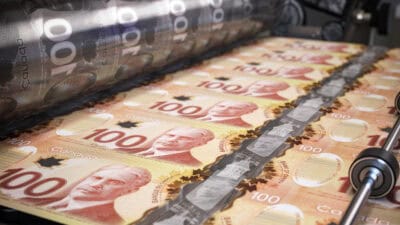In late March, I predicted that Alaris Royalty (TSX:AD) could cut its dividend by about 30-40% but that it’d still “be a lucrative total returns investment for high-risk investors.”
I also stated that the forward yield (after the dividend cut) would still be very high. Based on the company’s actual dividend cut of 30% in May, the forward yield (from when I wrote the previous article) would have been 13.5%.
Notably, management decided on the percentage of dividend cut based on the expected impact of the COVID-19 pandemic.
Since that article, Alaris Royalty stock has also appreciated more than 30% from $8.57 per share.
Let’s take a deeper dive into the company to see if it’s a good investment going forward.
What does the high-yield dividend stock do?
Alaris Royalty lends money to U.S. and Canadian private businesses mostly in the form of non-voting preferred equity. It targets business owners who want to remain fully in charge of their businesses but cannot get capital from other means.
In return, Alaris gets huge monthly cash distributions from the preferred equity investments. This ensures Alaris gets a return on its investments periodically without having to rely on an exit event, such as the private businesses buying back the preferred equity.
Alaris recently received revenue streams from 13 businesses. Its top three streams contribute about 45% of its revenue, while the top five streams contribute close to 63%.
The new dividend: What’s the dividend stock worth?
In March, Alaris announced a share buyback program that could buy back up to 10% of its outstanding shares. It was the perfect time to announce a normal course issuer bid as the stock essentially bottomed at that time, rising more than 60% from a bottom!
At $11.39 per share at writing, Alaris offers a yield of nearly 10.2% based on the new annualized dividend per share of $1.16. Its new payout ratio is estimated to be about 72% of operating cash flow, which is much more conservative than the run-rate dividend payout ratio of approximately 94% in early March.
Over the next one to three years, the dividend stock’s valuation can normalize to arrive at $16-18 per share. This implies upside potential of 40-58% while banking on a high yield of close to 10%.
In the last recession, Alaris cut its dividend by about 36%. But in subsequent years, it increased the dividend to greater than pre-recession levels. This time around, it will likely act similarly — increasing its dividend again when economic conditions improve.
What’s the risk?
Alaris’s portfolio generates a baseline cash yield of 13%. With that high a yield, there are corresponding risks. In the past, Alaris has had revenue streams that cut or outright halted its cash distributions to the company.
During times of trouble is the best time to buy Alaris stock for high total returns with below-average risk because much of the risks have been played out.
Here’s to give a better sense of Alaris’s risks. In its operating history, of the 15 businesses that it exited, four led to huge losses but the rest delivered double-digit rates of returns. Overall, the average total returns were 63%.
The Foolish takeaway
Much of the risks have played out at Alaris. The company cut its dividend, and its high yield of about 10.2% is more sustainable than before.
High-risk investors can consider the stock and expect upside potential of 40-58% over the next one to three years on top of the high yield.







